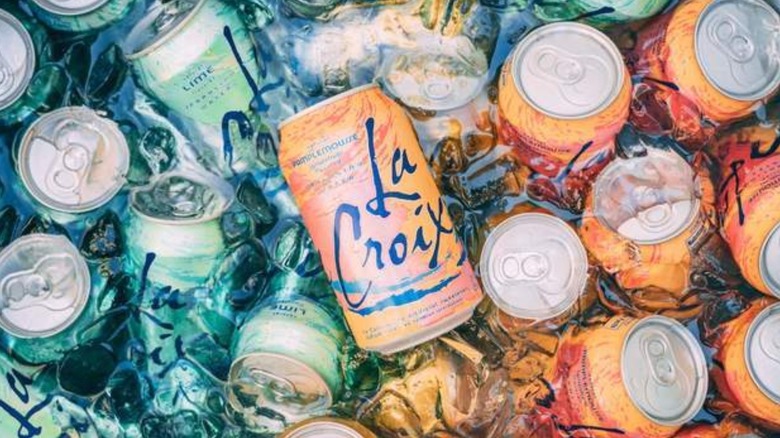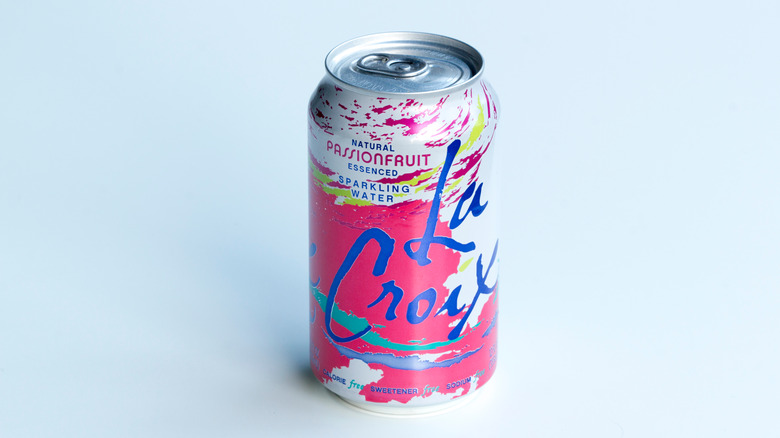Here's How LaCroix Gets Its Flavor
It's rare to open a fridge these days without seeing an array of colorful aluminum cans. No, we're not talking about sugary sodas this time. Sparkling water has certainly made a name for itself in the beverage industry. The effervescent, subtly sweet, carbonated drink comes in a variety of flavors to satisfy every sipper's palate, including exotic fruits, cheerful florals, and more. LaCroix, one of the world's most popular sparkling H2O brands, was first launched in 1981 by G. Heileman Brewing Company in La Crosse, Wisconsin, according to Bon Appétit.
LaCroix – which is French for "the cross" – currently offers dozens of flavors of sparkling water, including Beach Plum, Limoncello, Key Lime, Tangerine, Peach-Pear, Lemon, Lime, Pure (unflavored), Blackberry Cucumber, Cantaloupe Pink Grapefruit, Apple Cranberry, and Coconut Cola, according to the brand's website. Every LaCroix variety contains zero calories, zero sweeteners, zero artificial ingredients, no genetically modified organisms, and no added phosphoric acid (via The Wall Street Journal). So, if the ingredients are so minimal, how does the fizzy sensation get its iconic taste?
LaCroix is flavored with natural essences
If you take a close look at any can of LaCroix, you'll see that the flavors are "naturally essenced." "Essence is our picture word," LaCroix spokesman Rod Liddle explained to The Wall Street Journal. EAG Laboratories, a materials testing company, has even admitted that it would require more than $100,000 to confirm that LaCroix contains only natural essence oils and nothing else.
What on earth are essence oils, anyway? While essence doesn't appear in any U.S. Food and Drug Administration regulations, the FDA still allows brands to legally use the term to describe flavors extracted from spice, fruit, herbs, vegetables, or any other plant or meat materials. Essences are essentially natural concentrated chemicals that are made by heating the skins and rinds of fruits and vegetables at high temperatures. The vapors are then condensed and sold to companies for manufacturing. Essences are commonly used in everyday scented or flavored products such as coffee, shampoo, and of course, sparkling water.

